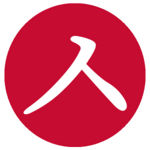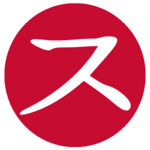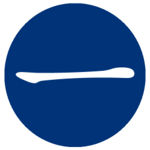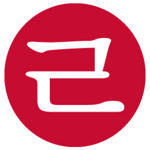Difference between revisions of "Hangeul step 3/hr"
DigitalSoju (Talk | contribs) (Created page with '{{HangeulTop/hr}} {| border=0 style="text-align:center; margin-left: auto; margin-right: auto;" |- | 150px | [[File:Next.png|link=Hangeu...') |
(No difference)
|
Revision as of 15:33, 21 April 2011
|
|
|
| Help · Cheat Sheet · Community portal |

|

|
In this lesson, you will learn:
Contents
|
| ||||||||||
|
Sounds like the "ai" in air. For full information about this letter, see ㅐ.
|
This is a /s/ sound. When combined with the vowels ㅣ, ㅕ, ㅑ, ㅠ, ㅛ it is pronounced like an "sh" sound, or the "x" sound in Chinese pinyin (IPA /ɕ/). Since we have not learned the last four vowels mentioned, just keep in mind that when ㅅ is combined with ㅣ, it sounds similar to "she" for now. You will be reminded later when you learn the other vowels. For full information about this letter, see ㅅ. | ||||||||||
| Practice | |
|---|---|
| 새 | |
|
| ||||||||||
|
This sound used to sound different from ㅐ, however these days this sound isn't really distinguished, though the vowel length can be shorter than ㅐ. Similar to the "e" in the English word "bed." For full information about this letter, see ㅔ.
|
This is pronounced like a mix between a B and a P at the beginning of a word, however, when found between vowels the sound is voiced and makes a /b/ sound. For full information about this letter, see ㅂ. | ||||||||||
| Practice | |
|---|---|
| 베 | |
| 배 | |
| 세 | |
|
| ||||||||||
|
There is no exact sound from English to which ㅓ may be compared. Its sound is somewhere between an "uh" sound and the 오 sound you previously learned. Listen to the audio file carefully! For full information about this letter, see ㅓ.
|
This is pronounced like a mix between a /j/ and a /ch/ sound at the beginning of a word, however, when found between vowels the sound is voiced and makes a sound similar to a /j/ sound, though it is not exactly a /j/ sound. There is a slight difference. For full information about this letter, see ㅈ. | ||||||||||
| Practice | |
|---|---|
| 저 | |
| 재 | |
| 제 | |
| 서 | |
| 버 | |
|
| ||||||||||
|
There is no exact sound to which ㅡ may be compared in English, so listen to the audio file carefully. For full information about this letter, see ㅡ.
|
This sound is capable of making both an R and an L sound. As the first letter it is sometimes pronounced as a mix between an R and an L sound with the exception of Western loan words where it sounds more like an R sound. Do note that this is not exactly the /r/ sound from English, but instead is a flap R sound like the D sound in the word 'rider' or double T sound in the word 'better'. If you are familiar with the sounds of Spanish it is very similar to the R sound in the word 'caro.' For full information about this letter, see ㄹ. | ||||||||||
| Practice | |
|---|---|
| 르 | |
| 래 | |
| 레 | |
| 러 | |
| 스 | |
| 브 | |
| 즈 | |
Real Examples
Practice with these real Korean words. The examples for step 4 have been split. Half of the examples for step 4 are here and half are on the next page.
| Word | Audio |
|---|---|
| 가게 (store) | |
| 가로 (the width) | |
| 가로수 (trees lining a street) | |
| 가르마 (a part in one´s hair) | |
| 가사 (the words of a song) | |
| 가수 (singer) | |
| 가스 (gas) | |
| 가루 (powder) | |
| 개 (dog) | |
| 개미 (ant) | |
| 거기 (there) | |
| 거리 (street,distance) | |
| 게 (crab) | |
| 기내 (the inside of a plane) | |
| 기다리다 (to wait) | |
| 고래 (whale) | |
| 구조 (rescue) | |
| 나라 (country) | |
| 나르다 (to carry) | |
| 나이 (age) | |
| 나사 (screw) | |
| 나비 (butterfly) | |
| 내리다 (to go descend) | |
| 네 (yes) | |
| 내 (my) | |
| 네모 (square) | |
| 너구리 (raccoon) | |
| 노루 (roe deer) | |
| 노래 (song) | |
| 다리 (leg, bridge) | |
| 다시 (again) | |
| 대구 (Daegu, the name of a Korean city) | |
| 데우다 (to reheat, to heat up) | |
| 도마 (chopping board) | |
| 도시 (city) | |
| 두부 (soybean curd,tobu) | |
| 드디어 (finally) | |
| 드라마 (drama) | |
| 라디오 (radio) | |
| 러시아 (Russia) | |
| 마루 (wooden floor) | |
| 마리 (counter used for counting the number of animals) | |
| 마르다 (to get dry) | |
| 마시다 (to drink) | |
| 머무르다 (to stay) | |
| 매다 (to tie) | |
| 매미 (cicada) | |
| 매우 (very) | |
| 머리 (head) | |
| 메다 (to shoulder) | |
| 메모 (memo) | |
| 모두 (every) | |
| 모래 (sand) | |
| 모르다 (to not know) | |
| 모자 (cap,hat) | |
| 무게 (weight) | |
| 무대 (a stage) | |
| 미래 (future) | |
| 미로 (labyrinth) | |
| 미소 (smile) |

|

|







